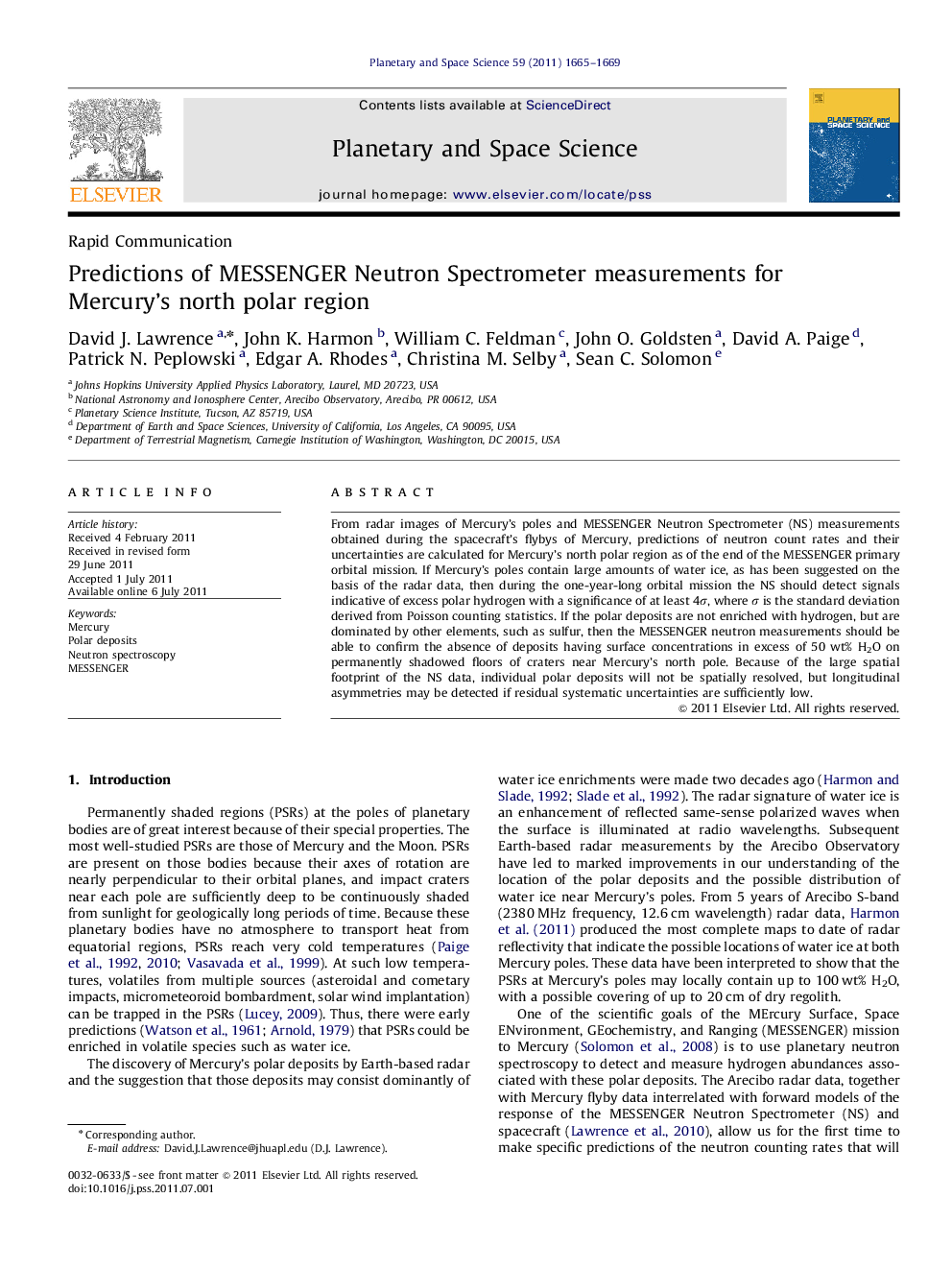| Article ID | Journal | Published Year | Pages | File Type |
|---|---|---|---|---|
| 10705314 | Planetary and Space Science | 2011 | 5 Pages |
Abstract
From radar images of Mercury's poles and MESSENGER Neutron Spectrometer (NS) measurements obtained during the spacecraft's flybys of Mercury, predictions of neutron count rates and their uncertainties are calculated for Mercury's north polar region as of the end of the MESSENGER primary orbital mission. If Mercury's poles contain large amounts of water ice, as has been suggested on the basis of the radar data, then during the one-year-long orbital mission the NS should detect signals indicative of excess polar hydrogen with a significance of at least 4Ï, where Ï is the standard deviation derived from Poisson counting statistics. If the polar deposits are not enriched with hydrogen, but are dominated by other elements, such as sulfur, then the MESSENGER neutron measurements should be able to confirm the absence of deposits having surface concentrations in excess of 50 wt% H2O on permanently shadowed floors of craters near Mercury's north pole. Because of the large spatial footprint of the NS data, individual polar deposits will not be spatially resolved, but longitudinal asymmetries may be detected if residual systematic uncertainties are sufficiently low.
Keywords
Related Topics
Physical Sciences and Engineering
Earth and Planetary Sciences
Geophysics
Authors
David J. Lawrence, John K. Harmon, William C. Feldman, John O. Goldsten, David A. Paige, Patrick N. Peplowski, Edgar A. Rhodes, Christina M. Selby, Sean C. Solomon,
